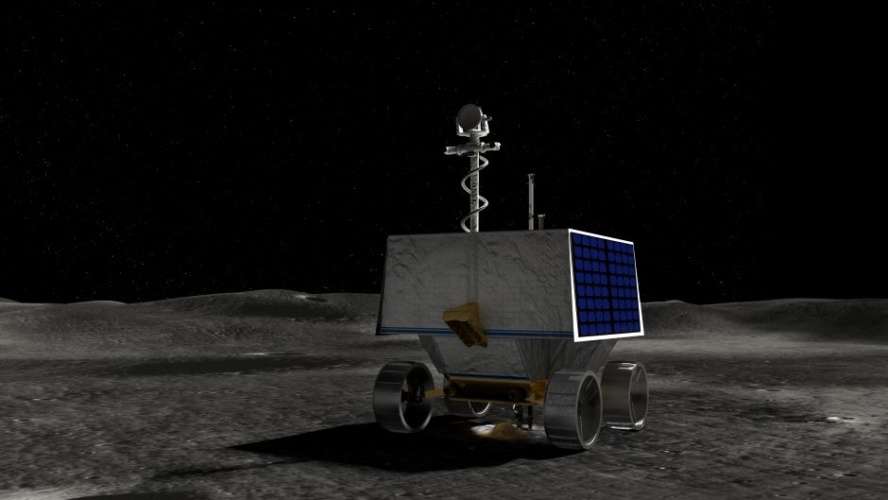NASA’s lunar rover will explore the South Pole of the Moon in 2023 in a search for water ice and other potential resources by means of its instruments and a 1m drill dubbed TRIDENT (The Regolith and Ice Drill for Exploring New Terrains). The drill samples will then be analysed by MSolo (Mass Spectrometer Observing Lunar Operations) and NIRVSS (Near InfraRed Volatiles Spectrometer System).
According to NASA, the rover will collect data on different kinds of soil environments affected by light and temperature, namely those in complete darkness, occasional light and in direct sunlight.
The data collected by the rover will show where the Moon’s water ice is most likely to be found and easiest to access. The first water maps of the Moon will mark a critical step forward in NASA’s Artemis program to establish a sustainable human presence on the surface of the Moon later this decade.

The exploration of lunar resources to produce oxygen and propellants could enable new mission architectures to human space exploration. The VIPER rover will be delivered to the Moon as part of NASA’s Commercial Lunar Payload Services (CLPS). With a launch foreseen in late 2023, the mission will have a duration of 100 Earth days, covering three cycles of lunar day and night.
Thales Alenia Space in Spain will design, manufacture, test and deliver the X-Band Transceiver and X-Band Diplexer, which are responsible for the rover communications with direct links between the lunar rover and Earth over NASA’s Deep Space Network.
“We are thrilled to collaborate with NASA on the VIPER mission, which will search for water on the Moon, a critical element to future human exploration endeavours,” said Eduardo Bellido, CEO of Thales Alenia Space in Spain. “This contract with NASA reflects our leadership in space communication systems and our competitiveness in delivering…communication equipment for all type of space missions.”




Swiss geoengineering start-up targets methane removal
No mention whatsoever about the effect of increased methane levels/iron chloride in the ocean on the pH and chemical properties of the ocean - are we...